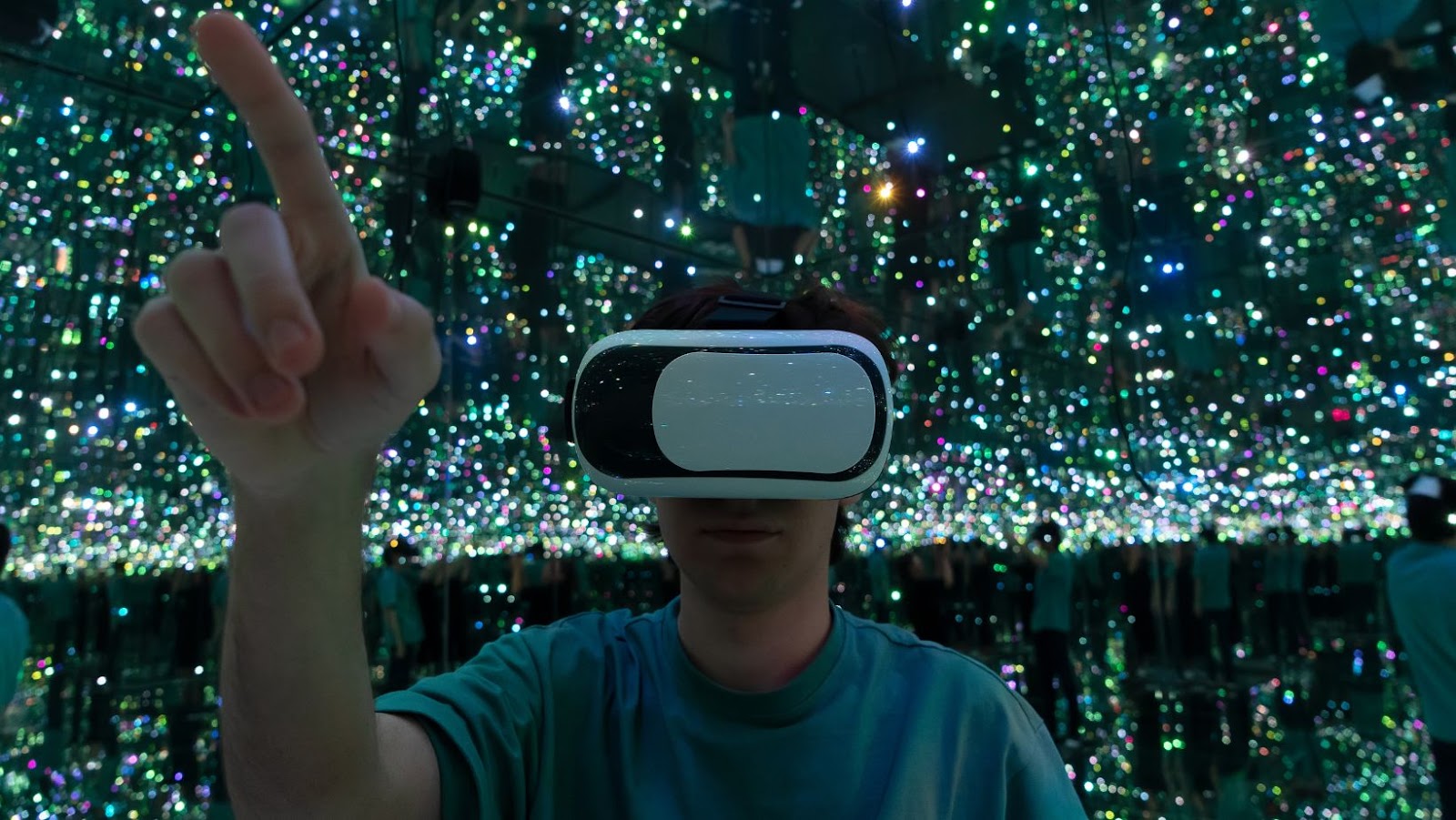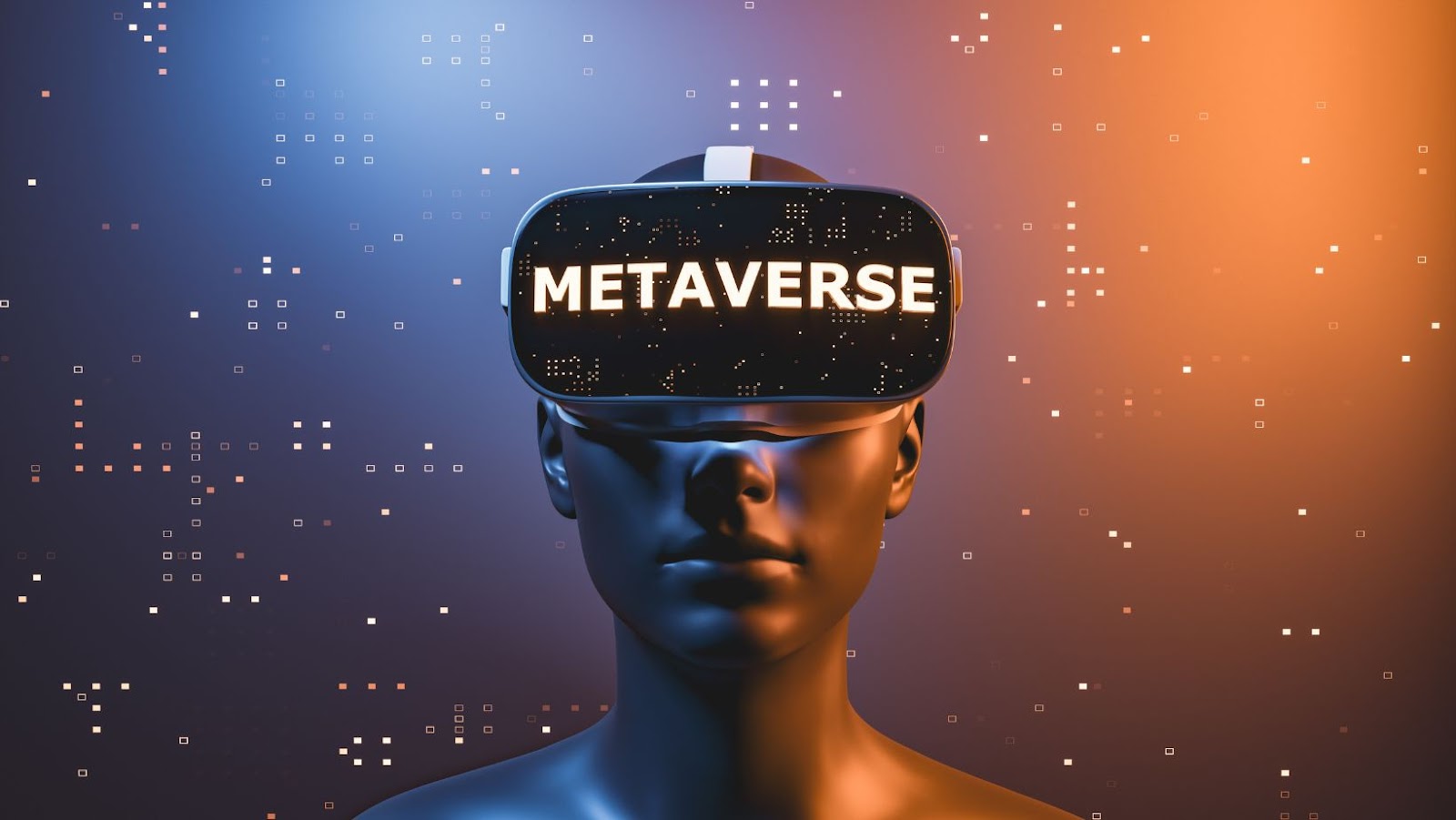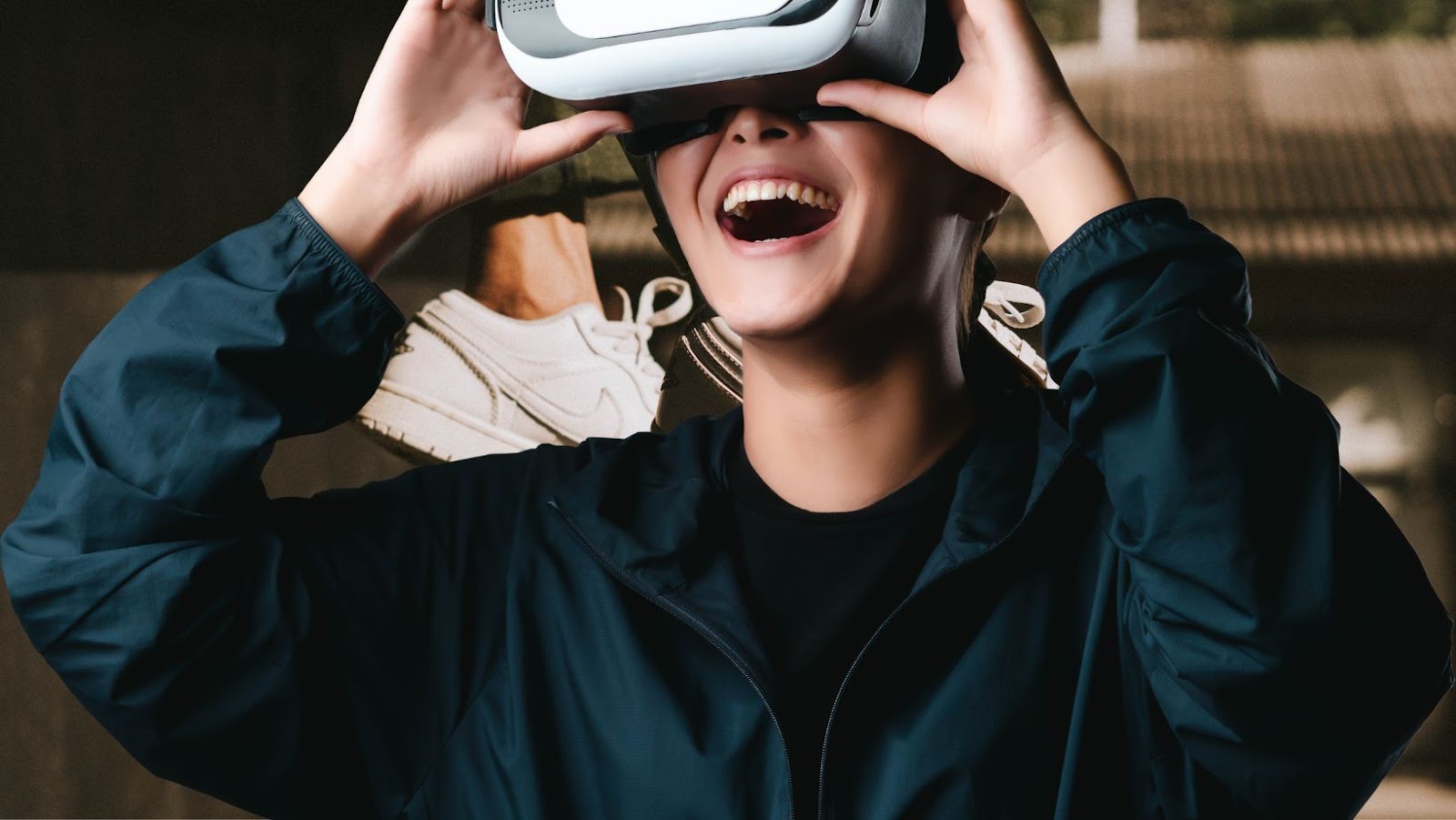The metaverse offers tremendous advantages for retailers, as it allows them to create immersive shopping experiences that were previously impossible. Customers can enjoy 360 degree immersive product viewing, access interactive product tutorials, and virtually test products before purchase, all from the comfort of home.
By understanding how the metaverse works, retailers can leverage this technology to reach and engage more customers than ever before.
This article will explore how the metaverse won the 2020 Christmas season.
Define the metaverse
The metaverse is a virtual environment that enables users to access a computer-generated 3D world. It’s a concept that has been discussed since the 1990s but is only now being realised thanks to technological advances and the emergence of massive open online virtual worlds like Second Life. Metaverse environments are designed to be immersive, interactive and social where users can share experiences, interact with objects, and generate content.
In recent years the metaverse has become increasingly attractive for businesses looking to diversify their products or services to stay competitive in an ever-evolving digital landscape. While there are many advantages for retailers investing in a metaverse ecosystem, including lower barriers to entry and the ability to reach customers globally, perhaps the biggest advantage for retailers is that it can provide an audio-visual representation of what would otherwise be limited by traditional methods.
The advent of virtual experiences embracing augmented reality (AR), virtual reality (VR), virtual item commerce (VIC) and artificial intelligence (AI) technologies have also opened up opportunities for retailers who wish to remain up-to-date with evolving consumer behaviour while reducing related costs such as physical store infrastructure. As such, the industry has scrambled to create bespoke metaverse experiences around core product lines to capture customers’ attention and keep them engaged with brands long after they have left the store environment.
On this note, we can see how ‘How the Metaverse Won Christmas’ by providing unique audio-visual experiences that capture customer imaginations through empowering them with an unprecedented level of interactivity; one which could not be achieved through physical retail spaces alone.
Explain why the metaverse is important for retailers
The metaverse – a shared virtual world based on the internet – is becoming increasingly important for retailers, largely due to its benefits over traditional shopping methods. By taking advantage of the immersive qualities of being in a metaverse, retailers can create an engaging and interactive shopping experience for their customers. This would include providing information about their products in virtual catalogues, demonstrating products through visuals or by using 3D representations, as well as allowing customers to virtually interact with other customers and store employees.
The potential benefit of using a metaverse goes beyond just providing an interesting shopping experience – it allows retailers to reach wider audiences through its global nature, while also bringing down operational costs. Using e-commerce features such as payment portals and technology assists in backend management tasks such as inventory tracking and sales analysis. Furthermore, tracking customer behaviours allows retailers to capitalise on market trends or user preferences for better targeting when creating new product lines or promotional campaigns.
These advantages have already been successfully used during the holiday season in 2020; many retailers have reported increased sales over previous years by leveraging the power of the metaverse for their seasonal campaigns. With more people turning to online channels to fulfil their holiday shopping needs, digital spaces like virtual malls will likely be an integral resource during peak seasons like Christmas and throughout all times of the year.
Benefits of the Metaverse
The metaverse is an exciting development that has allowed retailers to connect with customers in a virtual world. As a result, retailers can create an engaging shopping experience that is akin to an actual physical store, but with the reach of an online website. By leveraging the metaverse, retailers can create more meaningful customer interactions, move their products more quickly, and improve the overall customer experience.
Let’s look into the advantages of the metaverse for retailers.
Increased engagement and customer experience
Introducing the metaverse – a shared digital space where people, data and objects coexist – into the retail environment has presented numerous new opportunities for retailers. For the 2020 Christmas season, many retail businesses explored the potential of this disruptive technology to elevate customer engagement and increase their profits.
The key benefit of the metaverse is its ability to offer an immersive and interactive shopping experience. Retailers were able to create virtual spaces that give customers a realistic sense of being inside their stores, allowing them to catalogue items virtually, open windows into what was behind products or even access product information through augmented reality. This greatly enhanced customer engagement as shoppers felt more connected with the companies they were buying from and enjoyed an enhanced customer experience.
Retailers also used gamification techniques in online spaces to reward committed customers – offering loyalty points for achieving certain objectives or discounts for completing tasks within the platform.

This made shoppers feel more valued and incentivized them to return regularly; something which can be challenging in the highly competitive digital environment. Gamification also allowed companies to gain insights into customer behaviour while understanding trends better, so they could make faster decisions based on data-driven evidence.
Broader reach and customer base
The metaverse gives retailers a significantly broader reach for their products and services, allowing them to extend their customer base beyond the constraints of physical locations. By creating digital storefronts within the metaverse, retailers can relax geographical barriers and open up to customers from anywhere in the world. This also allows customers to discover new products and services that could not be accessed before due to geographical limitations.
Additionally, the metaverse provides convenient access to shoppers who can navigate through stores without physically walking into a store, which is particularly beneficial during peak shopping periods such as Christmas.
Allowing customers to explore products using virtual reality (VR) further enhances the buying experience by providing an immersive environment that allows customers to “try-on” clothes and accessories easily without visiting physical stores or waiting for online orders. This creates a sense of confidence in potential buyers, leading to higher conversions when products are finally purchased. In addition, digitally rendered touch points within stores make it easier for customers to get product insights directly from store employees instead of researching or asking other stores about the same items — an increasingly popular option for many shoppers during busy holiday seasons.
Finally, retailers can leverage personalised recommendations built into virtual shopping experiences on platforms like Augmented Reality (AR) and Virtual Reality (VR). Leveraging machine learning algorithms and consumer data on these platforms helps identify customer preferences quickly, allowing retailers to provide tailored suggestions from within their catalogues — something unlikely possible with physical stores alone. By optimising these experiences better with data gained from customer interactions in real-time, retailers have a powerful tool at their disposal for improving sales this holiday season.
Cost savings and improved efficiency
The potential of the metaverse for cost savings and improved efficiency is immense. Retailers have already seen significant cost reductions from the use of blockchain technology. In addition, connecting to a virtual world in real-time allows retailers to quickly conduct customer service, create collaborations between teams, train employees and provide product demos. Additionally, the virtual environment makes it much easier for customers to find and buy products. Further efficiency improvements are made possible by increased automation and decreased manual steps when processing orders.
The possibilities of adding immersive experiences to a customer’s shopping experience using AR/VR technology also presents many advantages. For example, this could be used to provide enhanced product visualisations or even simulate products in an actual retail store without the need for physical inventory or staff efforts required in traditional stores. Furthermore, retailers can leverage data gathered by sensors within the metaverse that enable improved interactive experiences and personalised targeting of customers on their preferred networks with relevant offers and content that increase sales conversions.
Lastly, advanced AIs can be leveraged within the metaverse environment, resulting in better customer engagement and better customer relationships due to automated segmentations according to buying habits and preferences and predictive analytics that suggest new products or services based on historic purchases by customers (or customer groups). This can result in improved market reach through personalised services tailored for different demographic groups and increased customer loyalty due to improved recommendations that lead towards repeat sales opportunities and cross-selling activities.
Challenges of the Metaverse
The metaverse is an exciting technology that is transforming how retailers do business. But, as with any technology, both advantages and challenges are associated with using the metaverse.
In this article, we’ll examine the challenges of the metaverse and discuss how retailers can overcome them.
Security and privacy concerns
The emergence of the metaverse poses numerous security and privacy implications, as we move into an era where the lines between physical and digital worlds become increasingly blurred. It is well known that the security and privacy risks associated with using virtual worlds have not been fully explored. Retailers who are eager to explore opportunities in this space must consider how these security and privacy concerns can be addressed before making any significant investments.
Firstly, existing authentication methods must be adapted to ensure secure access to virtual worlds. In addition, user data processing within virtual ecosystems should follow established laws on data privacy and protection. These legal frameworks will help guarantee consumers’ rights concerning their personal data, reduce market fragmentation in individual countries, and encourage global user confidence when accessing digital services.

Secondly, retailers need to ensure cyber-resilience when using cloud-based services integrated with virtual worlds by organising regular threat scans performed by experts and effective patching policies. Lastly, anti-fraud tools should be employed to detect fraudulent content while monitoring effort should remain high at all times due to frequent changes in the global legislative framework protecting these rights online. Taken together, retailers must act proactively to protect customers from cyber threats that might occur while using their services on the metaverse.
Technical complexity
The metaverse presents enormous technical challenges to retailers who want to participate in virtual shopping experiences. Establishing a presence in the metaverse requires a significant investment of resources, knowledge and skill. This technology is still relatively new and it involves intricate 3D designs, complex coding, enhanced graphics and animation technologies, sound design, and more.
Developing this technology requires expertise with multiple different programs, computing platforms, development languages and evolving technologies such as augmented reality (AR), haptics hardware development for tactile interactions and digital twins for immersive simulations. While VR is the most powerful platform for creating a full-scale virtual environment, other digital platforms such as mobile applications or web browsers can be combined with VR software to build a larger online presence.
In addition to developing these complex programs and systems for a virtual store or showroom, merchants must be prepared to continually upgrade their digital infrastructure or risk becoming obsolete amidst the rapid technological developments occurring in the metaverse space. This continuous innovation can become costly from an operational standpoint if proper investments are not made up front. As such, marketers must consider if they have the necessary resources and expertise needed when taking on this ambitious venture of expanding their business into the metaverse space.
Limited access to resources
Although there are indeed enormous potential benefits to retailers in transitioning to a metaverse, several challenges must be addressed before this technology can be embraced and adapted for use in a retail setting. One key challenge is limited access to the necessary resources. In addition, due to the still-developing nature of metaverse technologies, there are not yet universal standards and processes, making it difficult for retailers who may lack technical knowledge or experience with the technology.
Some initiatives are in place by organisations such as 3D Consortium and Open Source Metaverse working group that aim to develop industry-wide standards for development and usage of the platform. However, these are still very much in progress. This creates added difficulty when retailers attempt to access appropriate content or applications needed for their geographical area, or find experienced talent required to implement and manage the project on either a short-term or long-term basis. Additionally, difficulties arise with maintaining uniformity across platforms and different user experiences without standards in place – currently each metaverse environment varies greatly from provider to provider.
How the metaverse won Christmas
The metaverse is a virtual world where users can shop, join events and mingle in a virtual space. It has become a popular space for retailers in the past few years.
This case study will examine how a retailer used the metaverse to win customers and maximise holiday sales during the December 2020 holiday season. In addition, we will explore what the company did to ensure success and the results that had been achieved.
The success story of a retail brand
The success story of a retail brand leveraging the metaverse for their holiday promotions is an important lesson to learn. As the holidays approach with an increasing sense of urgency, more retailers are turning to the metaverse to meet their holiday needs and innovate quickly. From virtual try-ons and personalised virtual store shelves, to immersive events and augmented reality advertising, brands have found numerous ways to use this technology.
One particular brand successfully used the metaverse to promote their products through unique experiences such as 360° photo booths, 3D avatars of customers interacting with products and special offers. The results were astonishing — conversion rates increased by 36%, transactions by 72%, and visits by 24%. These numbers demonstrate how much was achieved simply by leveraging the metaverse for marketing purposes during peak shopping season.
The key takeaway from this case study is that trends will come and go but those who embrace technology and take advantage of trends can reap tremendous rewards from doing so. The lessons learned from this case study should be applied not only during peak shopping seasons but all year round — as new technologies arise brands have a great opportunity to stand out from the competition through innovative marketing campaigns in the metaverse.
How the metaverse was used to increase customer engagement
The use of the metaverse, or 3D/VR platforms, has become increasingly popular over the last few years. Businesses have accessed immersive tools and platforms to generate leads, sales, or other forms of marketing success. For example, during last year’s holiday season, retailers used the metaverse to engage with customers in innovative and imaginative ways.
One example is a campaign run by an international retailer that used 3D avatars as its main focal point. Users could customise these avatars as they wished, creating their own personalised virtual shopping experience through augmented and virtual reality (AR/VR). The avatars enabled customers to explore different products and services while being guided by an artificial intelligence-powered chatbot on making their decisions.
Another frequently employed tool for this purpose was virtual try-on technologies for apparel and apparel accessories, allowing customers to virtually try on clothes before purchasing them. Again, the technology enriches customers’ experience by allowing them to see how the garments would look from any angle before making a purchase decision – something impossible before Metaverse technology existed.
These types of applications can help consumers feel more confident when making purchases online by removing a lot of doubts about what exactly they are buying without having seen it in person beforehand — this can be especially tough during holiday shopping seasons where time is limited and physical stores are not available due to COVID restrictions or personal preferences. As such, it goes without saying that giving consumers access to an immersive and interactive 3D world with realistic product renderings will greatly improve customer engagement during these times!
The results of the campaign
The December 2020 holiday campaign results were well above the expectations of even the most optimistic. Merchants in the metaverse collectively sold hundreds of thousands of products, resulting in a staggering 120% year-on-year increase in revenue. As a result, the merchants in this world achieved growth during a difficult period for retail businesses and came out firmly on top.
It’s worth noting that this revenue was generated at almost no additional cost for many merchants. Because so much of the communication and sales process takes place digitally, eliminating any physical transportation costs, business owners can save millions just from transitioning to virtual storefronts. Moreover, as these stores are visited by customers worldwide—a trend that is expected to continue as exports become more mainstream—the potential benefits are multiplied even further.
One key takeaway was that shoppers responded well to a fully immersive experience with opportunities to customise their purchases and interact with store staff in real time using natural language processing technology. In addition, shoppers responded positively to browsing through an entire virtual store without leaving their home; this proved invaluable when many brick-and-mortar stores had closed their doors due to pandemic restrictions. And best of all, many holiday shoppers found their way back after experiencing what felt like an intimate one-on-one shopping journey within the confines of their own computer or device screen!


